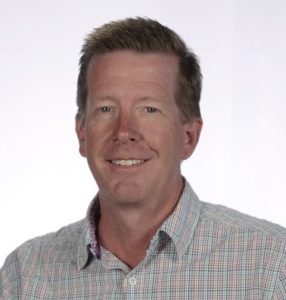Hospice care gets big help from big data
Identifying which home health clients might benefit most from hospice care can be a daunting task, especially if there are thousands of people to screen. Alabama’s largest privately owned home health agency is adopting predictive data analytics technology to speed the process of determining who is eligible for hospice services.
Alacare Home Care and Hospice, headquartered in Birmingham, Ala., has 25 offices serving over 5,000 home health patients. Of those patients, 620 to 640 are currently receiving in-home hospice care, says Susan Freeman, Alacare’s chief operating officer.
Knowing who can benefit the most from hospice care depends on more than just the realization that the patient has a terminal illness. In most cases, the patient must have six months or less to live and must demonstrate a continued decline. Although frank discussions with the patient’s family are integral to the selection process, most of the decision is based on clinical documentation in the patient’s health record. “Medicare and private insurance companies determine the criteria for eligibility,” Freeman notes. “But it’s diagnosis driven.”
But with more than 5,000 home health clients located throughout the state, trying to ascertain who was eligible and who was not proved to be challenging. “Determining clinical eligibility meant a huge chart review,” Freeman says.
Solving the problem meant partnering with a data analytics software company to develop algorithms designed for long-term care.
DIGGING FOR DATA
Dan Hogan, founder and CEO of Nashville, Tenn.-based Medalogix, is a former home health agency owner who developed a predictive modeling software program for assessing medication risks in older patients. He also developed a software solution that analyzed patient data to determine which acute care patients were more likely to be readmitted to the hospital. It was this predictive modeling toolset that first caught the eye of Alacare.
A series of discussions between Alacare and Medalogix led to the development last year of a predictive modeling software solution aimed specifically at the home health/hospice care market. “The model is built on OASIS-C,” Hogan explains. “Then we designed an algorithm for each of Alacare’s offices. We take all the patients’ data, go back and look at trends and then look at patient outcomes.”
With the success of the software solution at Alacare, Hogan says he has found another niche for predictive modeling. he currently has over 60 home health clients, 22 hospice clients and is about to begin a pilot program for skilled nursing facilities.
THE MEASURE OF SUCCESS
Chris Matthews, vice president of corporate services at Alacare, says the system designed by Medalogix is constantly “learning” as more patient data is collected. “It looks at about 1,000 different elements and has the ability to sweep the entire database.”
Freeman says the system is able to rank patients on the probability that they would benefit from hospice care, which, she says, eliminates the “oops, we didn’t find the patient that could have benefited.” Prior to the software installation, all screening was done via manual reviews of health records, Freeman says. “We couldn’t screen every patient. We didn’t have the resources.”
In only six months after rolling out the software, Alacare saw a 20.4 percent increase in the number of patients identified as clinically appropriate for transfer to hospice care. Automating the eligibility screening process also resulted in an 89 percent increased in the number of patients screened for eligibility during the six-month period.
Freeman also says she’s looking forward to using the software system to streamline processes after Medicare changes the reimbursement structure for hospice patients in 2015. “You’re going to have to manage less money more efficiently.”
Related Articles
Topics: Articles , Technology & IT











